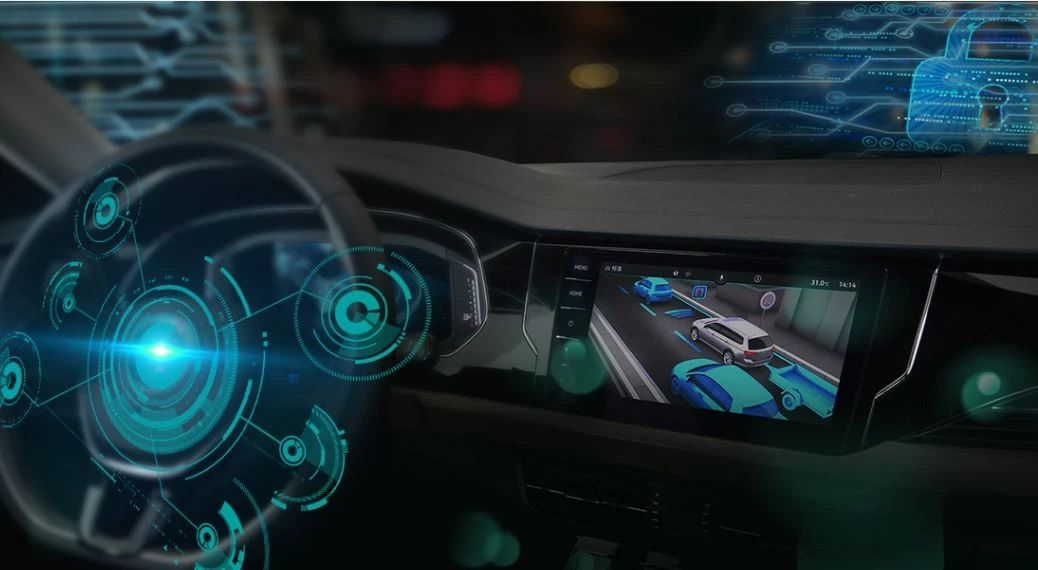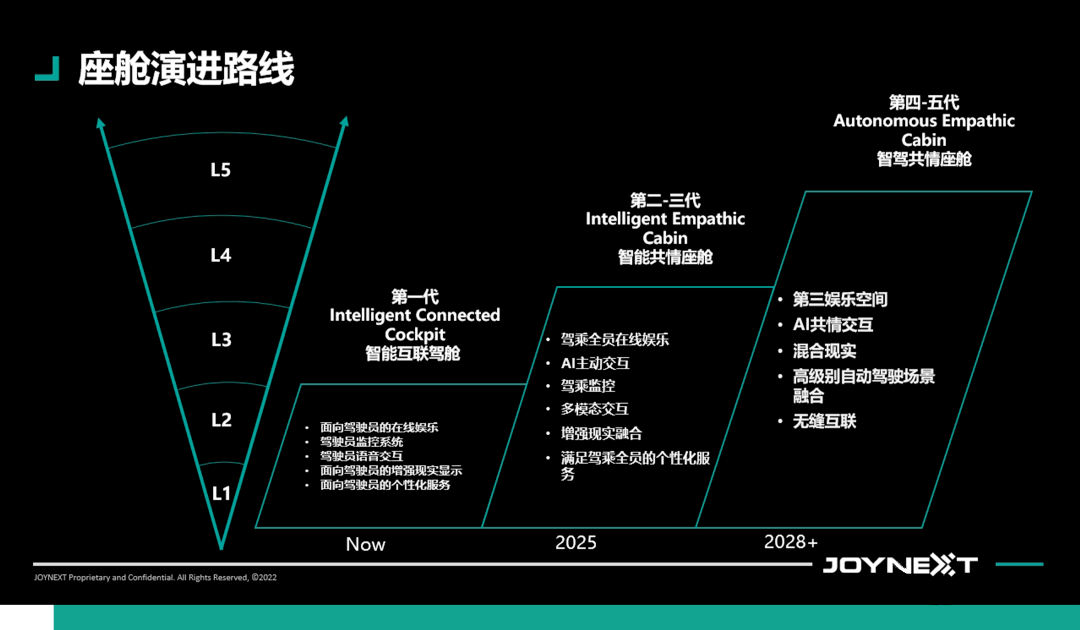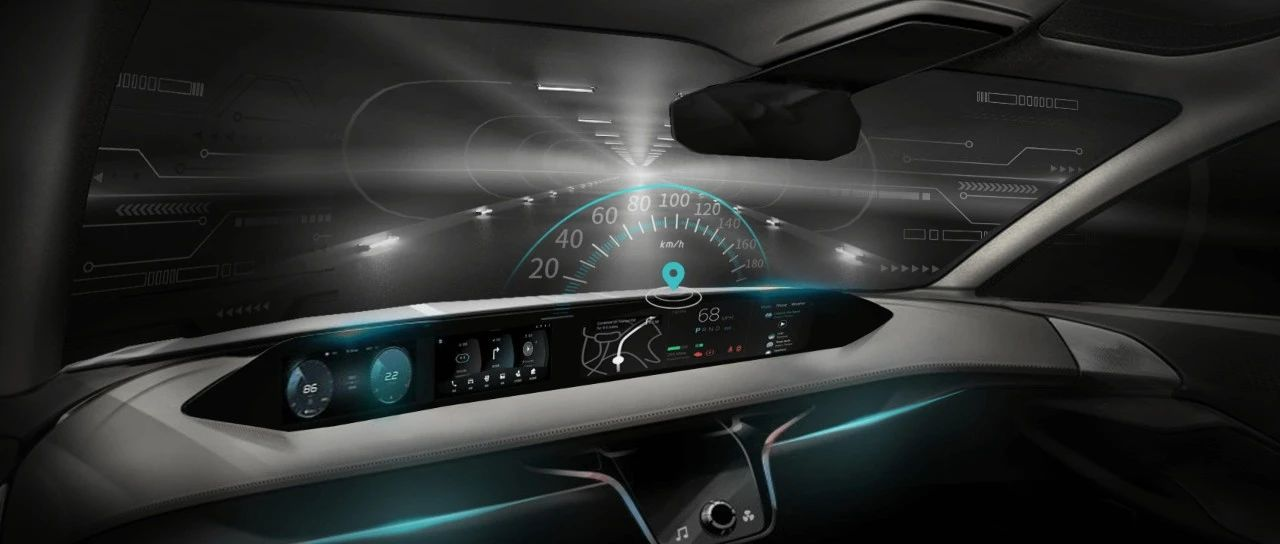Author: Tian Xi
Among all subdivisions of intelligent vehicles, except for autonomous driving, the cockpit area is the most active.
How many screens should be installed in the car, how should human-computer interaction be designed, whether it’s appropriate to move all mobile app ecosystems onto the car…
Each small question will eventually trigger a major industry discussion, making players involved excited, nervous, and even anxious.
As the car cockpit evolves toward intelligence, everything seems chaotic and no one knows what kind of product the market needs, what changes the user’s preferences will undergo. Therefore, attempts have to be made from various directions, and if they happen to get it right, everyone will be overjoyed, otherwise disappointed.
However, among them, there is a company that remains modest and deepens its research on the car cockpit area, boasting more than 20 years of experience, with outstanding product quality, and quietly taking up loading capacity in millions of cars. Its customers cover mainstream car companies around the world.
With the advent of the intelligent era and its sharp insight into market demand, it has deployed product research and development in advance, taking steady steps and solidifying its position through heavyweight orders.
It is JOYNEXT, the “invisible champion” in the intelligent cockpit field.
JOYNEXT pioneers in running two systems on a single chip, installing itself on 16 million cars
Unlike many emerging players, JOYNEXT, a subsidiary of JOYSON Electronics, entered the car cockpit field as early as 1997.
At that time, the car cockpit was more accurately the mechanical instrument panel and car radio. Since the 1990s, Germany’s TechniSat started with making car radios and successfully entered the Volkswagen system.
With the advancement of automotive electronics technology, TechniSat has independently designed and produced car navigation systems, covering almost all Volkswagen MQB platform models, with nearly 16 million cars carrying the product through all lifecycle phases.
In 2016, TechniSat was acquired by JOYSON Electronics and integrated into its subsidiary, JOYNEXT.
At this time, JOYSON Electronics began to expand from the European and American markets to the domestic market.
At this moment, there began to emerge a demand for interaction between the passengers and the car entertainment system in China.
JOYNEXT responded flexibly to local conditions and innovated boldly. Subsequently, it deployed the Android system on the Linux-based car navigation system, leveraging the security of Linux while comprising a greater variety of applications through the open Android ecosystem, thus providing rich cockpit experiences.“`

2019, JY Corporation officially launched this IVI (in-vehicle infotainment) system based on Linux and Android dual systems, which not only supports online navigation, entertainment, and vehicle control, but also provides voice control, intelligent travel, and life and entertainment services closely related to users.
It is worth mentioning that at that time, there was almost no entertainment host based on a single-chip and dual operating system on the market, and JY Corporation won the on-board application of nearly 20 models of three major brands under the Volkswagen Group.
As the cabin intelligent functions continue to increase, how to “connect” each module to provide a complete experience for users has become the focus of JY Corporation’s consideration.
At that time, due to the fact that most cabin products adopt distributed discrete control, each functional module is in a “single player” state. JY Corporation proposed to create an integrated hardware and software platform to provide a unified digital experience.
In 2018, JY Corporation’s cabin domain controller nGene series was born, which supports various mainstream chips. On the software side, it supports Hypervisor virtualization, various middleware and development tools, as well as multiple operating systems and special functional software customization development for whole vehicle manufacturers.
In the future, JY Corporation can also integrate other functions such as car machine and navigation, driving assistance, mobile communication, and driver monitoring on the intelligent cabin domain controller, control the entire system through human-computer interaction, and make the cabin more active, intelligent, and user-friendly through software, ecological applications, and air download OTA upgrades.
Currently, the nGene series has evolved to its third generation, and there are mass production projects of large platforms under development. At the same time, JY Corporation is also working with automakers to promote the expansion from the cabin domain to the central computing unit.
At the same time, JY Corporation is also building an intermediate layer “HAI platform” for human-computer interaction in the future, providing software and hardware decoupling, hardware abstraction, HAI studio, framework, as well as the combination of augmented reality software to help host factories or Tier 1 reduce duplicate development work and shorten development cycles.
Until now, Junlian Zhixing has evolved from providing a single module or system to covering domain controllers, operating systems, human-machine interaction, middleware, and application-layer algorithms as a smart cockpit solution.
In November 2022, Junlian Zhixing announced the signing of a comprehensive cooperation memorandum with Huawei. According to the plan, both parties will leverage their respective experiences and advantages to strengthen all-round exchanges in the cockpit and cockpit ecology, jointly create a comprehensive product solution based on the HiCar platform for smart travel, and expand the market together. At present, mass-produced car models equipped with cooperative products are under development.
## The Smart Cockpit is More Than Just a Touch Screen, But Also a Multi-Modal Human-Machine Interaction Experience
Jun Sheng Electronics not only provides internal cockpit software and hardware control and system services, but also provides external intelligent human-machine interaction products. Its subsidiary, Jun Sheng Puri (Preh), covers driving control modules, central control panels, air conditioning controllers, and multifunctional interactive switches in this regard.
As early as the mechanical era of car cockpit, Jun Sheng Puri provided instrument panels and cockpit physical buttons to car companies and was a well-known component supplier at that time.
In the electronic era of cars, Jun Sheng Puri's customers have spread to major host manufacturers worldwide. For example, it provided a rare touch control panel for Porsche's 918 supercar, and Puri's figure could be seen in the cockpit control systems such as the BMW iDrive, Audi MMI, and Mercedes-Benz multi-function steering wheel.
In 2016, Tesla Model3 was launched, adopting a large central control screen to replace a large number of physical buttons, subverting the traditional cockpit control system. Later, domestic car companies followed suit, making the screen full, button-less... Some new forces even more radical than Tesla, announcing the arrival of the intelligent era of car cockpit.
Jun Sheng Puri also firmly grasps the trend of cockpit intelligence, but at the same time maintains its technological caution, which stems from its deep understanding of the cockpit:
Intelligence does not mean completely eliminating mechanical control, and retaining some buttons or knobs is more in line with the safety requirements of car driving and ergonomics.
A counterexample is that some car companies integrate all cockpit functions on the central control screen, such as air conditioning control needs menu to be pulled down level by level to find. This design seems simple, but it actually creates unnecessary usage barriers for users, considering that the driver often operates during driving and is prone to certain safety risks.
markdown
Developers from JSPR mentioned that integrating some safety-related function modules from the central control screen to the intelligent steering wheel, knob, or intelligent surface can effectively improve the convenience and safety of operations.
The most representative is JSPR’s new generation of steering wheel modules.
The “knobs” on the top can be said to be the two most useful “shortcut keys” in the car. Drivers can achieve control over multimedia, voice commands, and cruise control through operations such as up and down sliding, left and right pushing, and downward confirmation. The safety level of functions has been significantly improved.
JSPR has also made many innovative attempts around the human-vehicle interaction interface of the intelligent cockpit.
For example, the intelligent human-vehicle interaction scheme of the multifunctional knob combined with the central control screen is an innovative product that JSPR promotes, and it has been applied to the world’s first pure electric SUV model under the Ford brand.

On the functional touch design of the suspended central control in the cabin, the new generation of concise interaction interface of Ford Mustang Mach-E no longer needs complex control menus, allowing every smartphone user to use interactive habits such as tapping, sliding, and two-finger zoom.
Combined with high recognition function menus, users can easily and conveniently access the required functions in the intelligent cockpit, intuitive and will not accidentally touch other functions.
The Ford Mustang Mach-E has won the love and pursuit of European and American car owners once it was launched, especially the multi-functional knob and touch central control screen with vibration feedback provided by JSPR, which is affectionately known as the “Magic Floating Knob“.
The touch central control screen with vibration feedback has also been put into mass production on luxury car models of many brands.
JSPR’s exploration and accumulation in the cabin control field are not only limited to this. At present, it has formed a multi-modal human-machine interaction method such as magnetic touch feeling knobs, gesture recognition, active/passive force feedback, handwriting input, and voice control, which can be customized and integrated for whole vehicle manufacturers’ customers according to their needs.
In recent years, JSPR has been favored by many car companies, including products such as HMI for car cabins, air conditioning controllers, driver control systems, sensing systems, and electronic control units. The company has won many global high-end whole vehicle manufacturers and traditional and emerging domestic car-making customers. The growth trend reflected in revenue in recent years is very significant.
“`## With the fusion evolution of cabins and vehicles, Juneng builds an intelligent and empathetic cabin
As intelligent driving technology advances, cars are transitioning from a singular mode of transportation to a “smart mobile space” centered around consumers. This means that the intelligent cabin will continue to evolve in the future.
Chen Yuan, CTO of Junlian Zhihang in China, stated that the evolution of the intelligent cabin aims to achieve empathetic human-machine interaction in the “third space”.

He summarized this evolution into three stages:
Firstly, from 2015 to the present day, vehicles are rapidly becoming interconnected, and cabins are entering the first intelligent phase – the “Intelligent Connected Cockpit” stage.
In this stage, the cabin has online entertainment, monitoring, speech interaction, augmented reality display, and personalized service functions oriented towards the driver.
From the present stage to around 2025 will be the “Intelligent Empathetic Cockpit” stage. Building on the foundation of the “Intelligent Connected Cockpit”, it will implement multimodal interaction and AI proactive interaction, providing online entertainment and personalized services for all passengers.
The cabin will then enter the “Intelligent Driving Empathetic Cockpit” stage, where it evolves from multimodal interaction to AI empathetic interaction, allowing AI and humans to empathetically interact. V2X technology enables wireless interconnectedness between vehicles and everything, meeting the needs of high-level autonomous driving scenarios and bringing people a brand new experience.
According to Chen Yuan, we are now in the intelligent empathetic cockpit stage. He further explained that traditional human-machine interactions are “I move, you act”, in which the cabin is controlled through mechanical actions, lacking feedback from the cabin and not approaching “empathy”.
As technology develops, human-machine interaction inside the cabin can be completed through multimodal methods such as “movement, sound, and gesture”. This belongs to the “I say, you act” stage, but fundamentally, the cabin still passively accepts the user’s instructions.
With the introduction of artificial intelligence, human-machine interaction begins to change, and the cabin begins to actively anticipate user behavior. “For example, when users say they feel hot inside the car, the machine can proactively turn on the air conditioning or open the car windows, rather than waiting for the corresponding instruction to be assigned. This means that the cabin begins to have some features of ’empathy’,” Chen Yuan explained. At this stage, it is “proactive+passive” interaction, “multimodal+empathetic.”“`
Deeper empathy is called immersive empathy. “Machines no longer need to judge the next action based on user demands, but push corresponding services proactively through observation,” Chen Yuan gave an example. When the smart cabin detects that the user is tired, it automatically plays soothing background music, adjusts the atmosphere lights in the car, and activates the seat massage function to provide emotional value for the user.
Regarding the stage of intelligent empathy cabin, the intelligent empathy cabin integrated solution developed by JunSheng ZhiXing focuses not only on multi-mode interaction within the cabin, but also on the combination with the 5G+C-V2X vehicle-road cooperation function. Based on the service-oriented SOA architecture, it supports more flexible customization of upper-layer applications and interactive upgrades for V2X scenarios.
From the earliest in-car radio and navigation systems, using mechanical buttons and knobs to start functions, to the now-rich application ecosystem, integrating multi-modal human-machine interaction and creating an intelligent empathic cabin, the evolution of JunSheng Electronics in the cabin field seems to lead the intelligent transformation, from tangible to intangible, but occasionally emerges from sporadic order disclosures, surprising everyone.
“When players from various backgrounds aggressively enter the smart cabin race track, no one thought that JunSheng was the king of this field,” exclaimed an industry insider.
Now, with the veil lifted, JunSheng Electronics, the invisible champion in the field of intelligent cabins, is finally revealed.
“`
This article is a translation by ChatGPT of a Chinese report from 42HOW. If you have any questions about it, please email bd@42how.com.
